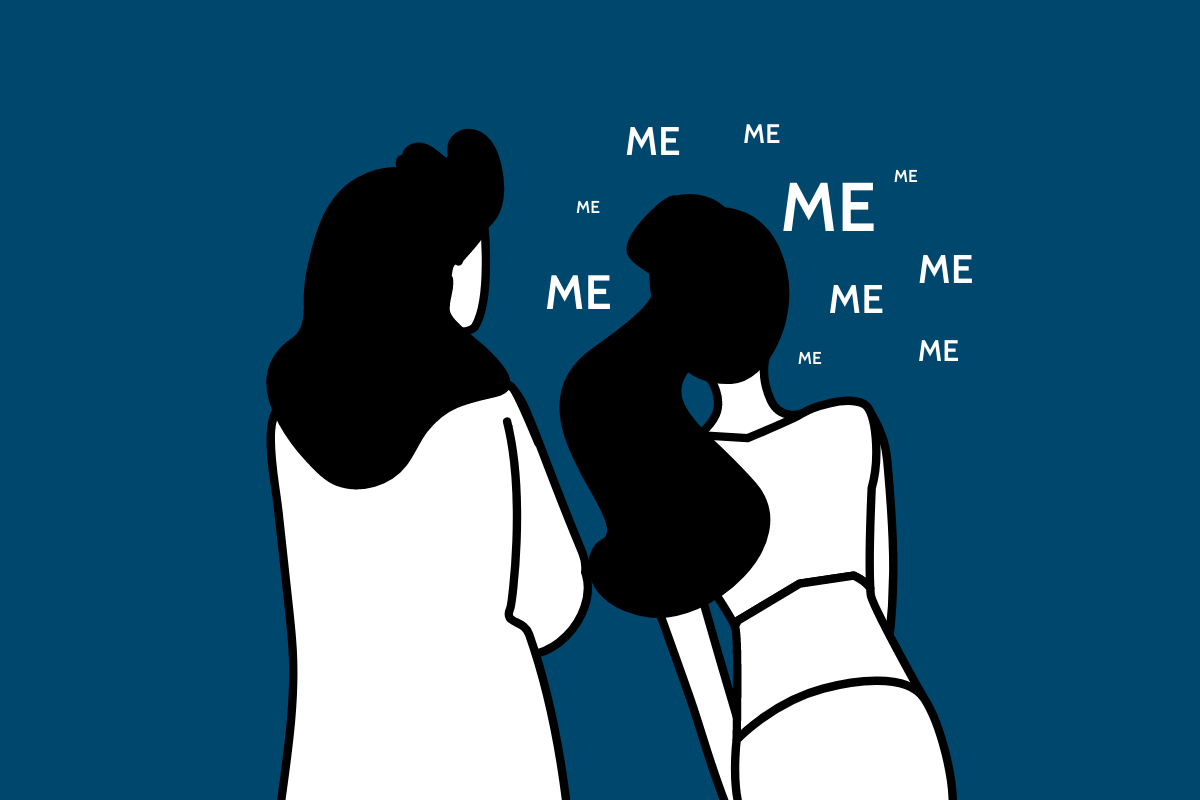Not all conversations are easy, but the difficult ones are often the most important.
Talking about race can make people uncomfortable – particularly people who benefit from the privilege that comes from being white.
They may not consider themselves racist. They might even call themselves an ally. So why is it that some white people go quiet or change the subject at the mention of the systemic racism that they benefit from? Why do some white people post a black square on their social media but refuse to engage in constructive conversation about Black Lives Matter, changing the date, or The Voice to Parliament?
First Nations Peoples – Aboriginal Peoples and Torres Strait Islander Peoples – and other Black Peoples and Peoples of Colour shouldn’t have to avoid these conversations to protect their white friends’ comfort.
And while it’s also not your job to educate your friends on these topics, real friends should be there to listen and learn when you do want to discuss these very real issues.
RAQ has had several clients seeking advice around how to have these conversations with the people in their lives over recent months.
So I sat down and had a yarn with Aunty Deb, our Aboriginal and Torres Strait Islander Engagement and Cultural Advisor, to get some insights on the topic. We wanted to share some ways you could start a conversation about race with your white friends.
Question their perception
Encourage your friends to reflect on how they see the world and what has formed their understanding of what they see.
Do they see First Nations Peoples in their daily lives? Do they see them represented in the media? How are they represented? Do they see stereotypes? Did their parents or friends ever talk about First Nations Peoples – Aboriginal Peoples and Torres Strait Islander Peoples – in a negative way?
These kinds of questions can help your friends consider their perception and start to think about how they can break the chains that constrain their thoughts. Our parents and/or the media might have given us ways to see the world, but it’s up to us to challenge and expand those.
Remember that how you bring people to an understanding is important.
Aunty Deb shared:
“It’s all about context – start with the person’s knowledge base. Try to understand what exposure they’ve had to First Nations Peoples’ collective knowledge of the facts of our colonial to present-day history. If the individual or group have had minimal exposure to this information, it’s important to provide an historical background with a timeline of historical facts from many sources of truth and alternative sources of history.
“For example, The First Australians SBS series and other historical texts by respected Historians like Noel Loos, Henry Reynolds, Bruce Pascoe, Jackie Huggins, Ray Evans. Some people have never heard or been taught these alternative historical viewpoints before.”
“We won’t be constrained by your stagnant perceptions of who we are.”
– Paraphrased quote by Aunty Eve Feisel, SEQ Gubbi Gubbi Elder, Traditional Owner and Academic.
Encourage them to unpack their privilege
Whether they’re aware or not, your white friends are receiving advantages, opportunities and rights simply based on the colour of their skin. This is called ‘white privilege’.
Some examples of white privilege include:
- Seeing people of your race widely represented in mainstream media
- Being able to choose to be surrounded by people of your race most of the time
- Easily finding makeup, Band-Aids, stockings and other items that match your skin tone
- Easily finding picture books, dolls, greeting cards, and magazines featuring people of your race
- Being able to swear in public or wear worn clothes without people attributing this to your race
- Not having to think about how your race might impact how you’re treated
- Not being called a racial slur
- Not being profiled by police.
Ask your white friends about their privilege and the things they might take for granted each day. How do these separate them from, or connect them with, other people? A little self-awareness can help them start to see through the eyes of others and understand more about the systemic racism in our society.
Bring their attention to daily microaggressions
Racism and microaggressions happen all the time, but white people might not notice it (that’s a privilege in itself). If you’re comfortable, start to point out microaggressions as they happen.
If you experience a microaggression on your own or with a friend, bring it up and ask them if they saw a problem with what just happened. It could be someone asking where you’re from in a disrespectful way, a shopkeeper watching you more closely than others, or someone moving away from you on public transport.
This could be a great way to start a conversation about the very real racism you face in your everyday life and prompt them to keep an eye out for these behaviours in the future.
Call out performative activism
It can sometimes seem like white people post anti-racist and “woke” content to their social media accounts just for show. Some of the people who posted a black square for Black Lives Matter still chose to celebrate with friends on Invasion Day. Something’s not adding up here!
Ask them if they think their values and actions in real life align what they post on social media.
Are they practising what they preach? Or are they just calling out everyone else’s behaviour without doing the work themselves? It takes more than a social media post to fight racism.
Talk about how they can help
White people can use their privilege to advocate for issues faced by First Nations Peoples. Let them know about some of the common frustrations you experience and what requires advocacy in the wider community.
This could be a good way to raise awareness around key issues and also provide your white friends with some guidance if they want to help but don’t know where to start.
There are also several bystander action programs that offer simple steps to stand up to everyday racism, such as:
- Confronting or disagreeing with the perpetrator (if safe to do so)
- Calling it “racism” or “discrimination” (if productive to do so)
- Interrupting or distracting the perpetrator (if safe to do so)
- Comforting the person(s) targeted
- Expressing upset feelings
- Seeking assistance from friend, teacher, manager, coach etc.
- Reporting the incident to authorities.
Encourage them to do their research
Your white friends can increase their exposure to First Nations Peoples and culture by actively seeking nonbiased representation in First Nations-led media and resources such as:
They can also raise their awareness by watching films and documentaries that highlight racial inequality and discrimination. There are also studies about the prevalence of discrimination in Australia and the harm it causes First Nations Peoples and communities.
Here are some statistics about discrimination and negative attitudes towards First Nations Peoples in Australia from a 2014 Beyond Blue study that you might like to discuss:
- More than half of non-First Nations Australians have witnessed acts of discrimination towards First Nations Australians.
- One in five (21%) admit they would move away if a First Nations Australian sat near them.
- One in five (21%) admit they would watch the actions of a First Nations Australian in a retail environment.
- One in 10 (12%) would tell jokes about First Nations Australians.
- One in 10 (10%) would avoid sitting next to an First Nations Australian on public transport.
- One in 10 (9%) would not hire an First Nations Australian for a job.
There’s no end to the information they can expose themselves to on the internet and beyond. It’s their responsibility to continually educate themselves about racism.
Know when to end it
As Aunty Deb says: “This is our country – First Nations Peoples have always lived here, and we should not be forced to be an aggressor in our own country. We’re not the problem.”
You’re not the problem. If your friend is causing you pain and frustration and is not willing to do the work or understand your experience, it’s OK to end that relationship.
You can protect yourself spiritually by removing yourself from people who don’t respect your culture and who you are as a person. You don’t have to spend the mental and emotional energy on educating or arguing with people who aren’t open to learning.
RAQ acknowledges the Traditional Owners on whose countries we live and work and Elders Past and Present. We pay tribute to their enduring stewardship, and honour their ongoing contribution to the spiritual, environmental, social, cultural, political and economic fabric of our society.


